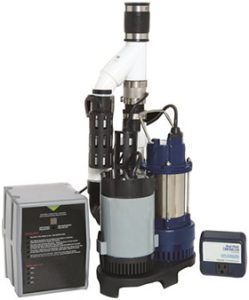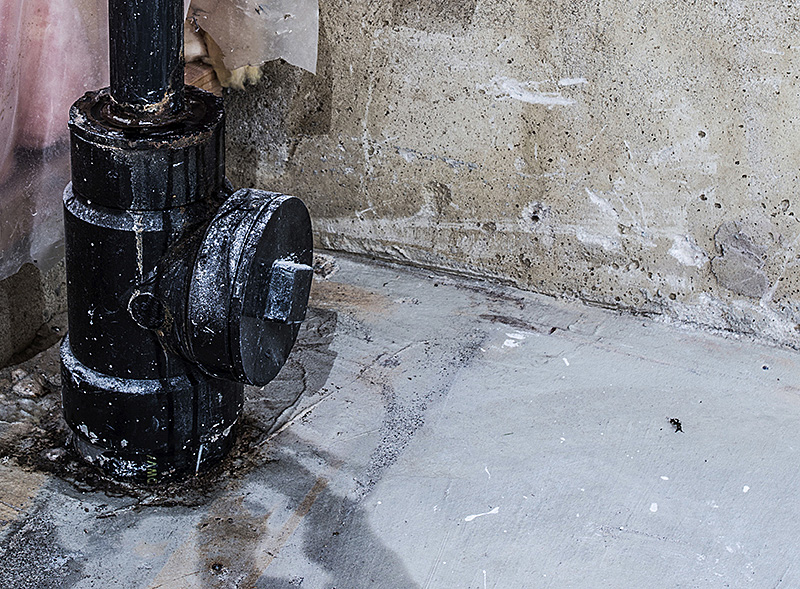The most common reason for sump pump failure is a power outage. Many times, loss of electricity is due to heavy rain and storms, which is the LEAST convenient time for your sump pump to fail. If you do not have a backup system, this can lead to major flooding, with water damage costs in the thousands of dollars!
Fortunately there is an easy solution to this common issue. A backup system will keep you from sustaining the flooding that occurs when your sump pump stops running. There are multiple options for backing up your primary sump pump system. This comparison may help you choose which system is best suited for the pump in your home or business.
Battery-powered Back-up Sump Pump:
 This system is generally designed to kick on automatically when it detects a power failure. A battery-powered backup system comes in varied battery sizes,
This system is generally designed to kick on automatically when it detects a power failure. A battery-powered backup system comes in varied battery sizes,
with a range of prices to match. Additionally, backup batteries can be added to increase the amount of time the system will run. The battery-powered sump pump system is easy to install, and can be used even if the water utility to your house is not running.
However, the efficiency of the pump will depend solely on how continuously it has to run. Depending on the situation, this could mean anywhere from a few hours of running time to a couple of days. There is a definite time limit on its use — it cannot continue running indefinitely. It will require some maintenance as well, as water levels and battery terminal must be checked periodically. Also, most batteries will require replacement every 3-5 years.
Water-powered Back-up Sump Pump:
A water-powered sump pump system is driven by the flow of water from your municipal water supply, so it does not require its own power source. This is especially helpful if you are in a situation where longer term backup is needed, since no electricity is necessary and there is no fear of a battery running out. Instead, this system uses water pressure to pump the water out and discharge it outside. It requires little maintenance and is considered a cost effective and reliable sump pump backup option.
You should keep in mind, though, that this system will not work if your city water is off for some reason. A water-powered sump pump must have a reliable water supply running at a minimum capacity of 40psi to continue operating. It also requires a separate drain line and some form of backflow prevention.
Back-up Generator
Some people choose not to use a full backup sump pump system, but opt for a gas- or propane-powered generator to provide supplemental power in the event of the loss of electricity. Different generators may require connection when electricity is lost, or may be set to come on automatically when power failure occurs. And depending on the size and type of generator you choose, costs vary greatly between models.
Additional Back-ups
If you happen to want to be extra prepared, there are double backup options as well. Many people use a combination water-powered backup system that is then backed up by a battery-powered system. Others utilize a battery-powered backup system that has an extra generator attached. It doesn’t hurt to be too careful — especially when flooding could cost you thousands of dollars in damage and countless hours of tedious cleanup.
Whatever backup system you choose, its important to be prepared. Don’t wait until the storm hits and the power goes out – leaving you wishing you had a back up for your sump pump system.


